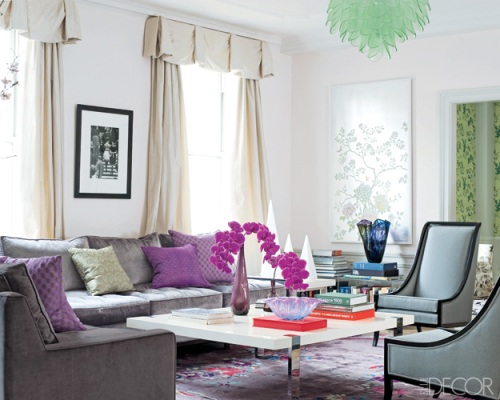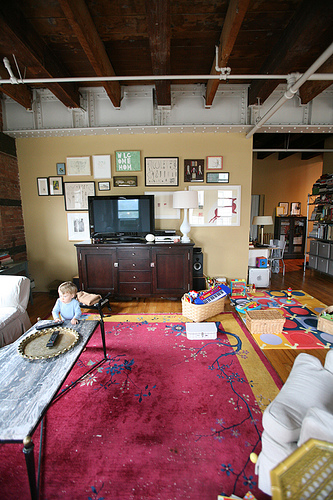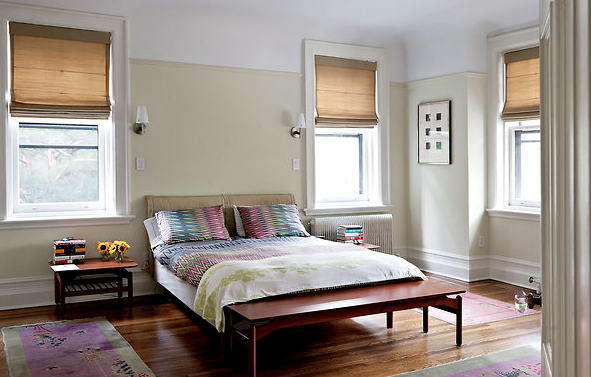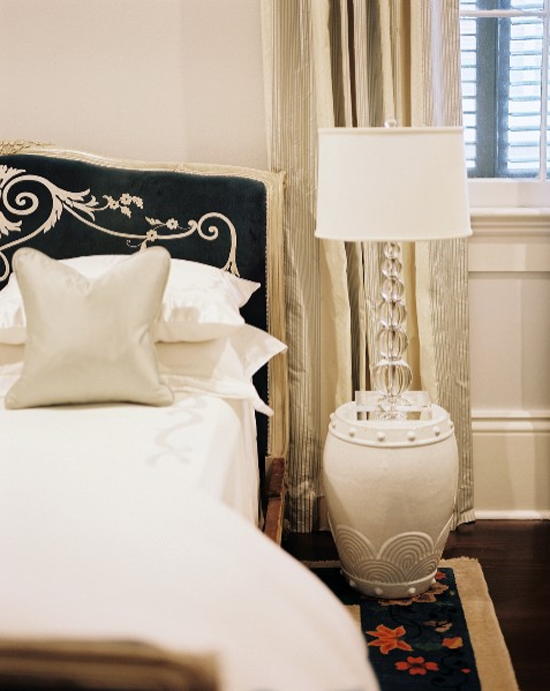


For the last of my Chinese New Year posts I turn to an item made in China but designed and sold pretty exclusively for export. Produced in the first third of the 20th century and then consigned until fairly recently to the pile of historical design mistakes, they have been rediscovered and appreciated by some. So decide if you love them or hate them, as Chinese art deco carpets are one of those items that rarely does anyone feel neutral about.
Traditional Chinese rugs were symmetrical and organized, as well as simply colored, using natural wool and dyes in colors such as brown, cream, tan, blue and gold. The riot of colors that was introduced by chemical dyes from Europe freed designers to create compositions using wild and unprecedented color combinations, particularly in the 1920s. The main center of production was a stop on our friend Yamamura‘s travels, the Tientsin Concession, now referred to as Tianjin. We always hear about the international nature of Shanghai in the early 20th century but it should not be forgotten that Tientsin was a major center of global production, particularly as it was at the heart of the wool trade. Walter Nichols, American entrepreneur and Tientsin resident owner of the largest rug production company dominated the field, so much so that Chinese art deco rugs are often referred to as “Nichols” carpets.
If, like me, you love primary source materials, take a look at this original Nichols Chinese Rugs pamphlet and Elizabeth Bogen’s article “What the Wool Trade Wrought” from Hali magazine. In it she makes the case that the Chinese rugs were influenced by the flowing French art deco style, as opposed to the machine-age angular deco style found in the US and the rest of Europe. Therefore by default, the true influence on them is Japonisme, which had so influenced the French style. I wholeheartedly agree with her analysis and think you will too after looking at the following photos. The floral designs, asymmetry and escape from rigid borders are all quintessentially of Japanese origin.
So enough talking – time to jump in to the photos! Actor Anthony Edwards and Stila founder Jeanine Lobell worked with designer Rafael de Cárdenas on their Park Avenue apartment, filling it with her trademark bright colors. Starting out with their space is like starting a joke with the punchline or giving away the best part of a story, but their rugs are truly extraordinary in color, condition and style, so we must start there. Their space also demonstrates one of the best characteristics of these carpets – the way that a few unmatched but similarly colored ones can work together in a space.
It seems like they have at least three of these lavender, purple and fuchsia beauties, which are not easy colors to find. Their lighthearted decor and colors revolve around them.
Jumping to another unusual color combination new in the 20s which then became popular, this Brooklyn loft has a giant burgundy and mustard art deco rug in the main space…
…with a smaller, complimentary colored one in the corner.
Because they are so pretty and plush for bare feet you find them quite often in bedrooms and personal spaces. Here Laurie Lieberman uses a grouping of 3 similarly colored smaller rugs around her bed in this NYC apartment.
In this bedroom by John Loecke you can see one peeking out from the bed. I love the way it works with the beautifully embroidered headboard.
And here is a tiny one being used as an entry rug next to a fabulous pink Victorian door. I hope visitors scrape their shoes well before coming inside!
Nanette Lepore’s dressing room, decorated by Jonathan Adler, is such a romantic setting, suiting the rug perfectly, from the mirrored chest to the velvet ottoman and crystal chandelier.
Sorry for the dark photo, but I could not resist showing this borderless art deco carpet, one of the most beautiful rugs I have worked with. Note the great painted Tibetan chest against the wall too.
The close up gives you a sense of the rich color, scrolling vines and bamboo and the deep pile. Kids love to sprawl out in front of the TV on this rug.
While I don’t personally own one, my early associations with them come from an old “Thoughts of Home” essay in House Beautiful magazine (who else out there remembers that monthly column, now long gone?) In it, a woman inherits a giant, soft Chinese art deco rug and chronicles it witnessing the milestones of her family’s life. At the end of the piece, she rolls it up and brings it to her daughter’s home where the next generation of her family will get to enjoy it. For some reason, that essay always stuck in my head and made me romanticize them. I have been sorting back issues trying to find the essay but so far no luck. There is a published compendium or two, so I may have to check there next.
On a related note for locals, the Tokyo American Club’s annual Carpet Auction is happening on Saturday, February 25th. No Chinese art deco rugs to be found there, but there will be a huge selection of carpets from many of the other major weaving regions including Iran, India, Pakistan, Russia, Turkey and Afghanistan.This sale has a charitable component too – two million yen will be donated to the College Women’s Association of Japan for a scholarship. To see my article about it in this month’s issue of iNTOUCH magazine, click here.
For more on the Tientsin Consession:
If Only This Suitcase Could Talk
Research From a Reader…More On Yamamura-San’s Suitcase
Image credits: 1-3. ABC Carpet & Home via 1stdibs, 4-5. Elle Decor October 2010, photo credit: William Waldron, 6-7 via chiarabelle‘s Flickr photostream, 8. The New York Times October, 26 2011, photo credit: Trevor Tondro, 9-10. John Loecke via Little Green Notebook, 11. Elle Decor September 2008 photo credit: William Waldron, 12. New York Social Diary October 22, 2010, photo credit: Jeff Hirsch, 13-14. R. Michaelson.











